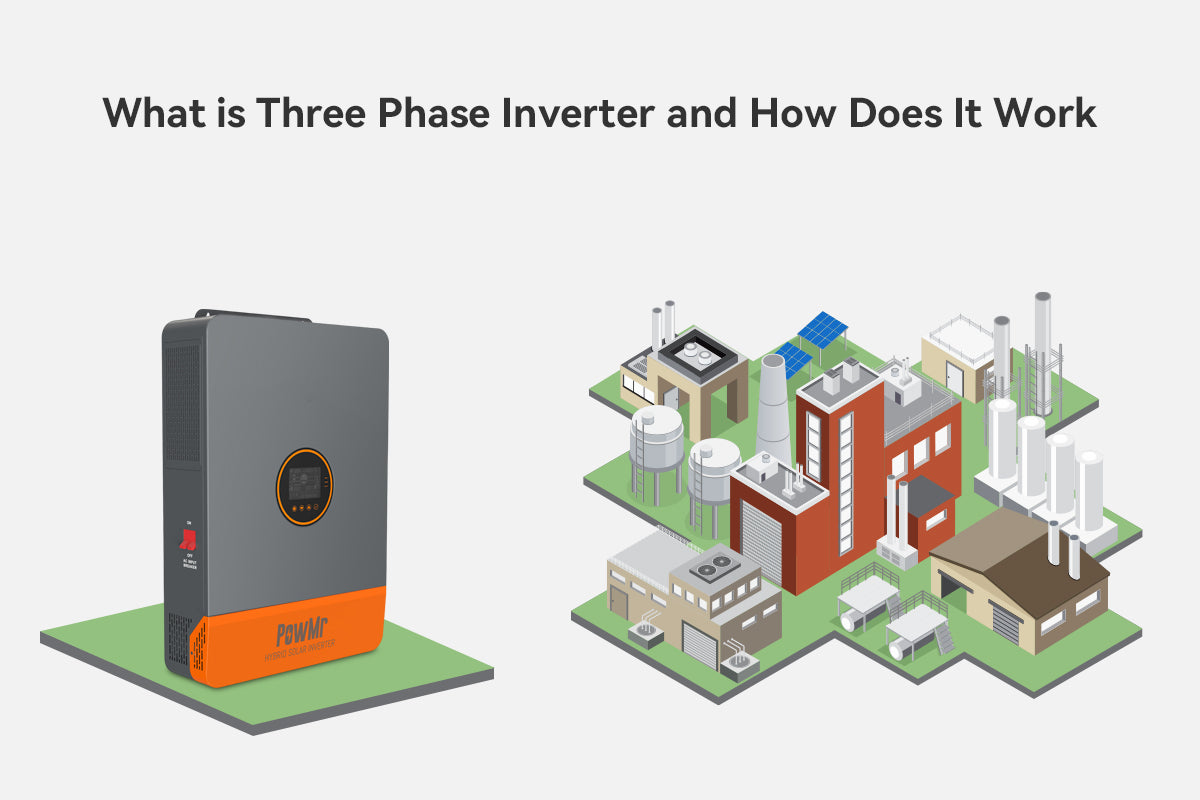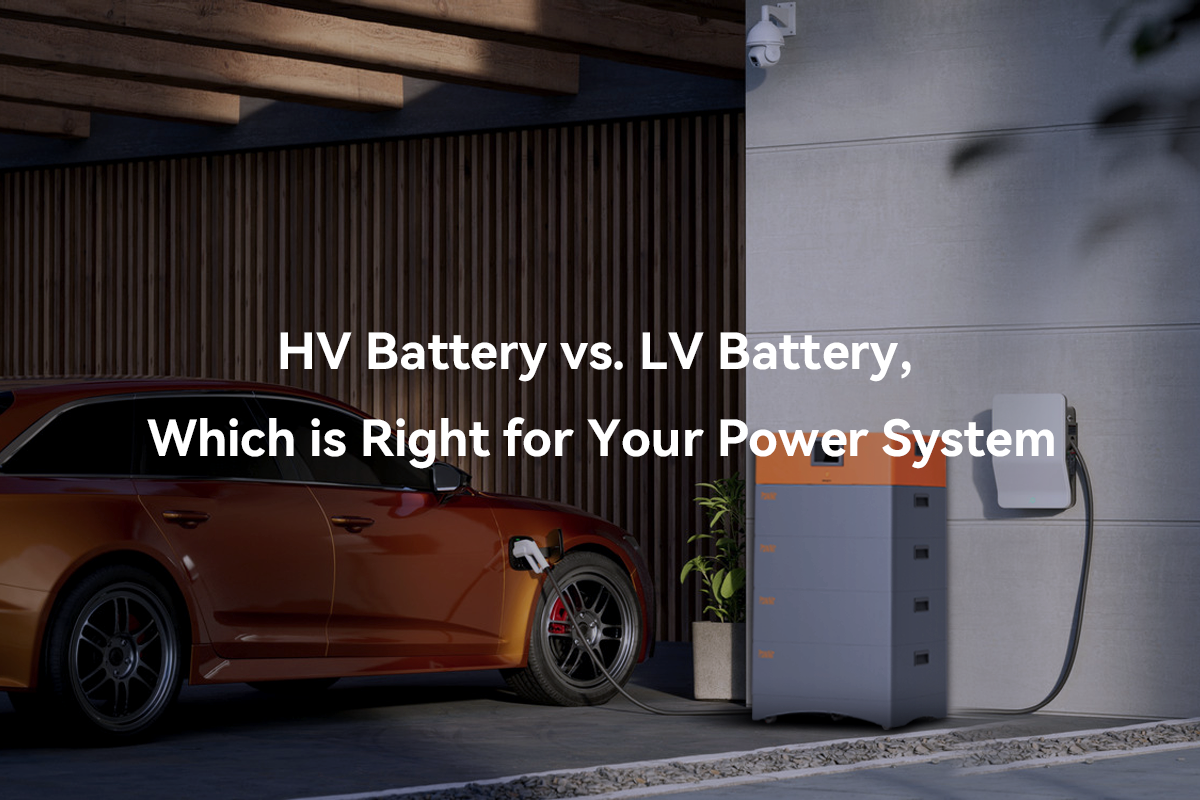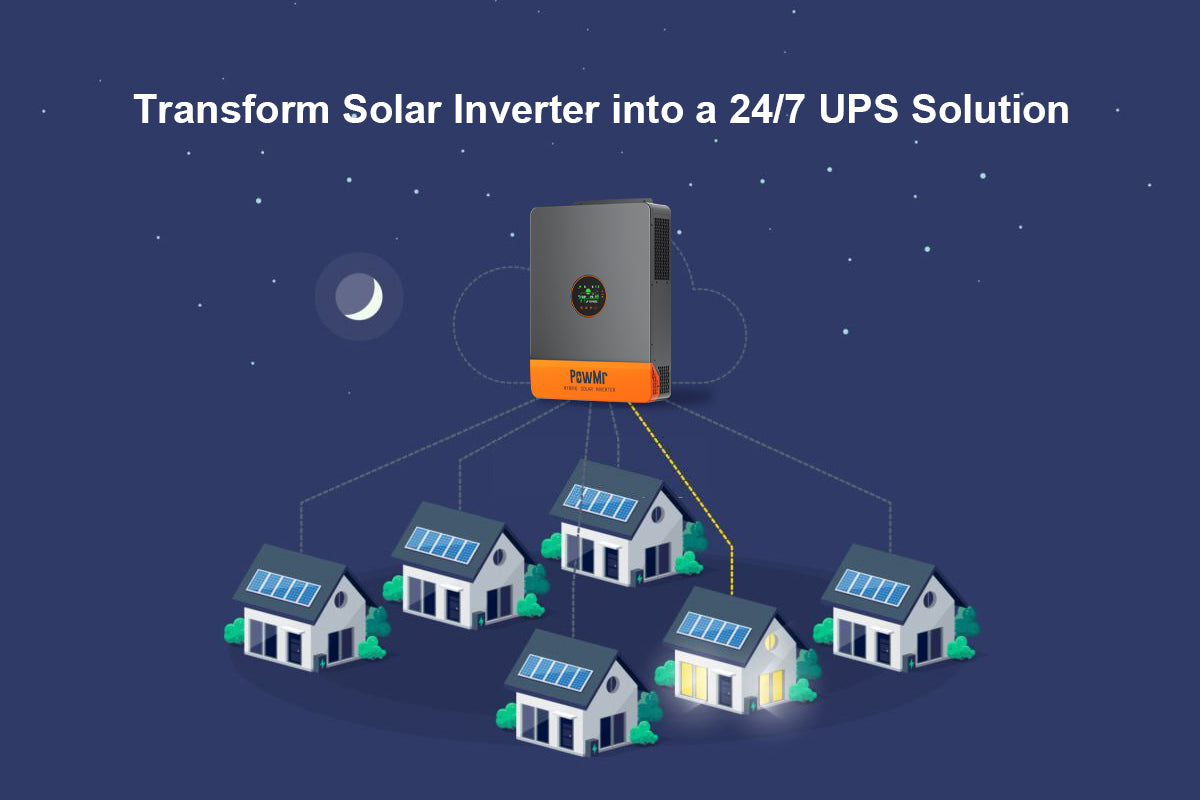หลังจากพูดคุยเกี่ยวกับ อินเวอร์เตอร์แบบแบ่งเฟส วันนี้เราจะวิเคราะห์ส่วนประกอบสำคัญในระบบพลังงานแสงอาทิตย์ขนาดใหญ่: อินเวอร์เตอร์แบบสามเฟส.
การออกจากระบบไฟฟ dre-phase สามเฟสจากระบบไฟฟ้าแบบเฟสเดียวแบบดั้งเดิมช่วยเพิ่มประสิทธิภาพและเปิดโอกาสสำหรับการกระจายพลังงานที่เหนือกว่า การเข้าใจพื้นฐานของพลังงานสามเฟสเป็นสิ่งสำคัญในการชื่นชมการใช้งานในระบบพลังงานแสงอาทิตย์.
- พลังงานสามเฟสคืออะไร
- อินเวอร์เตอร์สามเฟสคืออะไร
- อินเวอร์เตอร์สามเฟสทำงานอย่างไรในระบบพลังงานแสงอาทิตย์
- การแปลงกระแสตรงเป็นกระแสสลับ
- การควบคุมพลังงานไฟฟ้ากระแสตรงจากแผงโซลาร์เซลล์ (DC to DC)
- การแปลง AC เป็น DC
- การซิงโครไนซ์กับกริด
- ข้อดีของอินเวอร์เตอร์สามเฟสเมื่อเปรียบเทียบกับอินเวอร์เตอร์เฟสเดียว
- เมื่อจำเป็นต้องใช้ Inverter สามเฟส
พลังงานสามเฟสคืออะไร
พลังงานไฟฟ้าสามเฟส เป็นประเภทของการส่งพลังงานไฟฟ้าที่เกี่ยวข้องกับคลื่นไซนัสสามคลื่น ซึ่งแต่ละคลื่นจะมีการเลื่อนเฟสออกไปหนึ่งในสามของรอบ หรือ 120 องศา ห่างกัน มันเป็นวิธีที่ใช้กันทั่วไปในการผลิต การกระจาย และการใช้พลังงานไฟฟ้า.

มาตรฐาน แรงดันไฟฟ้า สำหรับระบบไฟฟ้าสามเฟสสามารถ แตกต่างกันตาม กฎระเบียบในแต่ละภูมิภาค ความต้องการของกริด และแนวปฏิบัติในอุตสาหกรรม.
แรงดันไฟฟ้าสามเฟสของยุโรป
ตัวอย่างเช่น ระบบจ่ายไฟฟ้าสามเฟสในยุโรปมักปฏิบัติตามแรงดันไฟฟ้าที่ได้มาตรฐาน เช่น 380V/400V/415V โดยอาจมีความแตกต่างกันไปในแต่ละประเทศ.
การจ่ายไฟฟ้าแบบ 3 เฟสใช้ ระบบ 4 สาย โดยมี สาม สายที่กำหนดว่า เป็นสายเฟสหรือสายไฟ และ สายที่สี่ เป็นสายกลาง แรงดันไฟฟ้าระหว่าง สายไฟสองสายใดๆ จะถูกกำหนดว่าเป็น 380V, 400V หรือ 415V ซึ่งเรียกว่า แรงดันเฟสต่อเฟส / แรงดันสายไฟ.

แรงดันไฟฟ้าระหว่างเฟสกับนิวทรัล / แรงดันไฟฟ้าระหว่างเฟส ที่วัดได้ระหว่าง สายไฟแต่ละเส้นกับสายกราวด์ มีค่า 220/230/240V มาตรฐานนี้ขยายไปเกินกว่าบริบทอุตสาหกรรมและธุรกิจ โดยมีการนำไปใช้ในสภาพแวดล้อมที่อยู่อาศัยด้วยเช่นกัน.
แรงดันไฟฟ้าสามเฟสของอเมริกาเหนือ
ในอเมริกา ระบบไฟฟ้าสามเฟสมีมาตรฐานแรงดันไฟฟ้าที่หลากหลาย โดยมีค่าทั่วไปคือ 208V, 240V, หรือ 480V ซึ่งกำหนดโดยการใช้งานเฉพาะและกฎระเบียบท้องถิ่น.
ตัวอย่างเช่น ระบบไฟฟ้าสามเฟส ซึ่งพบได้ทั่วไปใน อาคารพาณิชย์ในสหรัฐอเมริกา มักมีการตั้งค่า 120/208V ที่มีสายนำสี่เส้น โรงงานอุตสาหกรรม จะชอบการจัดเรียงสามเฟสที่หนาแน่นและมีพลังมากขึ้นที่ 277/480V ซึ่งให้การจ่ายไฟที่มากขึ้นอย่างมีนัยสำคัญในกระแสเดียวกัน.
แรงดันไฟฟ้าสามเฟสของโอเชียเนีย
ในโอเชียเนีย ออสเตรเลียและนิวซีแลนด์สอดคล้องกับแนวปฏิบัติระดับโลก โดยนำมาตรฐาน 400V มาใช้สำหรับระบบโซลาร์สามเฟส
แรงดันไฟฟ้าสามเฟสของเอเชีย
การย้ายไปเอเชีย จีนเลือกใช้ 380V หรือ 400V และญี่ปุ่นปฏิบัติตามมาตรฐานท้องถิ่นเช่น 200V หรือ 400V ในตะวันออกกลาง ซึ่งมีซาอุดีอาระเบียเป็นตัวอย่าง มาตรฐาน 400/690V เป็นที่แพร่หลาย.
แรงดันไฟฟ้าสามเฟสของแอฟริกา
หันไปที่แอฟริกา แอฟริกาใต้ปฏิบัติตามมาตรฐาน 400V ในขณะที่ไนจีเรียและประเทศแอฟริกาอื่น ๆ มีแนวโน้มไปตามมาตรฐานยุโรป โดยใช้ 400V สำหรับระบบสามเฟส ประเทศในแอฟริกาเหนือ เช่น อียิปต์ สอดคล้องกับตะวันออกกลางด้วยมาตรฐาน 400/690 V.
อินเวอร์เตอร์สามเฟสคืออะไร
อินเวอร์เตอร์สามเฟสเป็นอุปกรณ์ที่ แปลงพลังงาน DC เป็น คลื่น AC ที่แตกต่างกันสามคลื่น ซึ่งมีเฟสห่างกัน 120 องศาเพื่อสร้าง เอาต์พุต AC สามเฟสที่ซิงโครไนซ์.
ในแอปพลิเคชันพลังงานแสงอาทิตย์ อินเวอร์เตอร์มีบทบาทสำคัญโดยการแปลงพลังงานไฟฟ้ากระแสตรงจากแสงอาทิตย์เป็นพลังงานไฟฟ้ากระแสสลับเพื่อการรวมเข้ากับกริดหรืออุปกรณ์สามเฟสอย่างราบรื่น โดยเฉพาะในระบบไฮบริดที่ต้องการการแปลงพลังงานที่มีประสิทธิภาพ.
อินเวอร์เตอร์สามเฟสทำงานอย่างไรในระบบพลังงานแสงอาทิตย์
การแปลงกระแสตรงเป็นกระแสสลับ
โดยทั่วไปแล้ว พลังงานสามเฟสประกอบด้วยสายสี่เส้น โดยสามเส้นทำหน้าที่เป็นเฟสที่ใช้งาน และอีกเส้นหนึ่งเป็นสายกลางที่ต่อดินที่แผงสวิตช์

ตัวอย่างเช่น PowMr SunSmart L3 series inverter (8kw, 12kw) รับประกันการจ่ายไฟ AC ทั่ว L1, L2, L3, และ N โดยมี แรงดันไฟฟ้าของเฟสที่ปรับได้ตั้งแต่ 200 ถึง 240Vac (230Vac เป็นค่าเริ่มต้น) นอกจากนี้ อินเวอร์เตอร์ยังมีความยืดหยุ่นด้วย แรงดันไฟฟ้าสายที่ปรับได้ระหว่าง 350 ถึง 415V โดยมีการตั้งค่าเริ่มต้นที่ 400Vac ความสามารถในการปรับตัวนี้เป็นประโยชน์ต่ออุปกรณ์ไฟฟ้ากระแสเดียวและอุปกรณ์สามเฟส ทำให้เป็นตัวเลือกที่หลากหลายสำหรับการใช้งานในที่อยู่อาศัยและเชิงพาณิชย์.
การควบคุมพลังงานไฟฟ้ากระแสตรงจากแผงโซลาร์เซลล์ (DC to DC)
เพื่อรองรับความต้องการพลังงานที่สูงและรับประกัน ความเป็นอิสระจากกริด ของระบบสามเฟส แบตเตอรี่เก็บพลังงาน มักจะถูกนำมารวมเข้าด้วยกัน ซึ่งช่วยให้ระบบทำงานได้อย่างอิสระและทำหน้าที่เป็นแบ็คอัพในช่วงที่กริดขัดข้อง เพื่อใช้พลังงานแสงอาทิตย์อย่างมีประสิทธิภาพ อินเวอร์เตอร์สามเฟสจะรวม ตัวควบคุมการชาร์จพลังงานแสงอาทิตย์แบบติดตามจุดพลังงานสูงสุด (MPPT) ไว้ด้วย.
ตัวอย่างเช่น PowMr SunSmart L3 8kw อินเวอร์เตอร์สามเฟส มาพร้อมกับ ตัวควบคุมการชาร์จ MPPT แบบคู่ ซึ่งแต่ละตัวรองรับช่วงแรงดันไฟฟ้าขาเข้าที่กว้างตั้งแต่ 200 ถึง 650Vdc โดยมีพลังงานขาเข้าจากแผงโซลาร์เซลล์สูงสุดที่ 6000W ต่อช่องทาง ซึ่งช่วยให้แผงโซลาร์เซลล์ทำงานได้อย่างมีประสิทธิภาพสูงสุด เพิ่มประสิทธิภาพโดยรวมของระบบและเพิ่มการเก็บเกี่ยวพลังงานให้สูงสุด.
การแปลง AC เป็น DC
หลังจากการ รวมแบตเตอรี่เก็บพลังงาน การแปลงพลังงาน AC เป็น DC จะช่วยเพิ่มความยืดหยุ่นของระบบไฟฟ้า การรวมกันอย่างไร้รอยต่อระหว่าง AC เป็น DC และ DC เป็น AC ช่วยเพิ่มประสิทธิภาพการใช้พลังงานและการมีปฏิสัมพันธ์กับกริด.
ฟังก์ชันการทำงานที่มีพลศาสตร์นี้ไม่เพียงแต่รับประกันการจ่ายไฟที่เสถียร แต่ยังช่วยให้ระบบสามารถ ใช้ประโยชน์จากช่วงเวลาที่มีการใช้ไฟฟ้าต่ำและลดค่าไฟฟ้า ได้อีกด้วย ในบริบทของระบบพลังงานแสงอาทิตย์แบบสามเฟส ข้อดีของการตัดยอดการใช้ไฟฟ้าและการเติมเต็มในช่วงต่ำ จะถูกขยายออกไป โดยเฉพาะในสภาพแวดล้อมอุตสาหกรรมที่มีความต้องการสูงในช่วงพีคมากขึ้น.
PowMr อินเวอร์เตอร์สามเฟสรองรับช่วงแรงดันเฟสตั้งแต่ 170 ถึง 280V และช่วงแรงดันสายตั้งแต่ 305 ถึง 485V ในระหว่างขั้นตอนการแปลง AC เป็น DC มีฟีเจอร์ การตั้งค่าการชาร์จ/การปล่อยพลังงานตามช่วงเวลา ซึ่งใช้ประโยชน์จากอัตราค่าบริการในช่วงพีคและช่วงต่ำเพื่อลดค่าใช้จ่าย เหมาะสำหรับระบบพลังงานแสงอาทิตย์สามเฟส โดยเฉพาะในสภาพแวดล้อมอุตสาหกรรม มันโดดเด่นในแอปพลิเคชันการตัดพีคและการเติมช่วงต่ำ เพื่อให้แน่ใจว่ามีการจ่ายพลังงานที่เสถียรและการมีปฏิสัมพันธ์กับกริดที่มีประสิทธิภาพ.
การซิงโครไนซ์กับกริด
ในระบบพลังงานแสงอาทิตย์แบบไฮบริด การซิงโครไนซ์ที่แม่นยำกับกริดไฟฟ้า ซึ่งหมายถึง การบรรลุความกลมกลืนในความถี่เอาต์พุต รูปคลื่น เฟส และแรงดันไฟฟ้า เป็นสิ่งสำคัญสำหรับการรวมเข้ากันอย่างราบรื่น และจำเป็นสำหรับการถ่ายโอนพลังงานอย่างราบรื่น อินเวอร์เตอร์สามเฟสจะรับผิดชอบงานนี้.
ยกตัวอย่างโดย PowMr อินเวอร์เตอร์สามเฟส มันมี ตัวเลือกความถี่ 50 หรือ 60Hz ซึ่งช่วยให้การเชื่อมต่อกับกริดมีความซิงโครไนซ์และเสถียร นอกจากนี้ยังให้ เอาต์พุตคลื่นไซน์บริสุทธิ์ ซึ่งช่วยเพิ่มคุณภาพและความน่าเชื่อถือของพลังงานที่ผลิตได้.
ข้อดีของอินเวอร์เตอร์สามเฟสเมื่อเปรียบเทียบกับอินเวอร์เตอร์เฟสเดียว
ความหนาแน่นพลังงานที่เพิ่มขึ้น
อินเวอร์เตอร์สามเฟสช่วยให้สามารถส่งมอบกระแสไฟฟ้าที่เทียบเท่าด้วยสายไฟที่มีขนาดเล็กลง เพิ่มความหนาแน่นของพลังงานโดยรวมในระบบการกระจายไฟ
เพิ่มประสิทธิภาพ
เมื่อเปรียบเทียบกับวงจรไฟฟ้าแบบเฟสเดียว ระบบไฟฟ้าแบบสามเฟสจะให้พลังงานเกือบสองเท่าด้วยกระแสไฟฟ้าเท่าเดิม ส่งผลให้มีประสิทธิภาพที่ดีขึ้นในการกระจายพลังงาน.
การเพิ่มประสิทธิภาพพื้นที่
การใช้พลังงานอย่างกระชับในพื้นที่น้อยลงช่วยลดต้นทุนการเดินสายไฟและเลื่อนการใช้จ่ายด้านทุน ซึ่งส่งผลต่อการเพิ่มประสิทธิภาพการใช้พื้นที่โดยรวม.
ความสามารถในการนำไปใช้
โดยเฉพาะอย่างยิ่งมีประโยชน์ในสภาพแวดล้อมที่ใช้พลังงานสูง เช่น การติดตั้ง IT ความหนาแน่นสูง, ศูนย์ข้อมูล, คลังสินค้า, การผลิต และอุตสาหกรรมการผลิต.
บทสรุป - เมื่อใดที่ต้องใช้อินเวอร์เตอร์สามเฟส
สิ่งสำคัญที่ต้องทราบคือ สำหรับการใช้งานในที่อยู่อาศัยที่มีการติดตั้งโซลาร์เซลล์ขนาดเล็ก อินเวอร์เตอร์โซลาร์แบบเฟสเดียวอาจเพียงพอ การเลือกใช้ระหว่างอินเวอร์เตอร์แบบเฟสเดียวและแบบสามเฟสขึ้นอยู่กับ ความต้องการเฉพาะ ของการติดตั้งและ ลักษณะของกริดไฟฟ้าท้องถิ่น ด้านล่างนี้คือสถานการณ์ทั่วไปที่ข้อดีของการกระจายพลังงานแบบสามเฟสมีความสำคัญต่อประสิทธิภาพและการรวมระบบที่เหมาะสม.
การใช้งานในอุตสาหกรรม
อุตสาหกรรมที่มี เครื่องจักรหนักและความต้องการพลังงานสูง จะได้รับประโยชน์อย่างมากจากอินเวอร์เตอร์สามเฟส ความสามารถในการจ่ายพลังงานที่สูงขึ้นและความเสถียรที่ระบบสามเฟสให้มานั้นมีความสำคัญต่อการดำเนินงานในอุตสาหกรรมโดยไม่มีการหยุดชะงัก.
การติดตั้งเชิงพาณิชย์ขนาดใหญ่
สถานประกอบการเชิงพาณิชย์ที่มีความต้องการพลังงานสูง เช่น ห้างสรรพสินค้า, ศูนย์ข้อมูล, และอาคารสำนักงานขนาดใหญ่ จำเป็นต้องใช้เครื่องแปลงไฟฟ้าสามเฟส เครื่องแปลงไฟฟ้าเหล่านี้สามารถจัดการกับภาระที่หลากหลายและมีความต้องการสูงที่พบในสภาพแวดล้อมดังกล่าวได้อย่างมีประสิทธิภาพ.
บ้านที่ใช้พลังงานสูง
ในที่อยู่อาศัยที่มีอุปกรณ์ที่ใช้พลังงานมาก เช่น เครื่องทำน้ำอุ่นไฟฟ้า, ระบบ HVAC, และอุปกรณ์ในครัว มีอยู่มาก สามารถใช้ตัวแปลงไฟฟ้าสามเฟสเพื่อให้การจ่ายไฟที่มีความสมดุลและเสถียรมากขึ้น ซึ่งมีความสำคัญโดยเฉพาะในบ้านขนาดใหญ่ที่มีอุปกรณ์ที่ใช้พลังงานสูงหลายเครื่องทำงานพร้อมกัน.
ฟาร์มพลังงานแสงอาทิตย์
ในฟาร์มพลังงานแสงอาทิตย์ขนาดใหญ่ที่ครอบคลุมพื้นที่กว้างขวาง อินเวอร์เตอร์สามเฟสเป็นสิ่งที่ขาดไม่ได้ ความสามารถในการ ส่งพลังงานไปยังระยะทางไกล โดยมีการสูญเสียขั้นต่ำช่วยให้การส่งมอบพลังงานมีประสิทธิภาพจากแผงโซลาร์เซลล์ที่อยู่ห่างไกลไปยังจุดเชื่อมต่อกับกริด.
รถยนต์ไฟฟ้า (EVs)
รถยนต์ไฟฟ้ามักใช้ตัวแปลงสัญญาณสามเฟสในอิเล็กทรอนิกส์พลังงานของพวกเขาเพื่อแปลงพลังงาน DC จาก แบตเตอรี่แรงดันสูง (HV) เป็นพลังงาน AC เพื่อขับเคลื่อนมอเตอร์ไฟฟ้า ระบบสามเฟสให้การทำงานที่ราบรื่นและมีประสิทธิภาพมากขึ้นสำหรับการขับเคลื่อนรถยนต์ไฟฟ้า.
การเชื่อมต่อกริด
ในพื้นที่ที่มีระบบไฟฟ้าเป็นแบบสามเฟส การใช้เครื่องแปลงไฟฟ้าพลังงานแสงอาทิตย์แบบสามเฟสจะช่วยให้การเชื่อมต่อกับกริดเป็นไปอย่างราบรื่น ระบบสามเฟสมักถูกใช้ในพื้นที่เมืองและในสถานที่ที่มีความต้องการพลังงานสูง การใช้เครื่องแปลงไฟฟ้าสามเฟสช่วยในการกระจายพลังงานให้สมดุลในสามเฟส.



